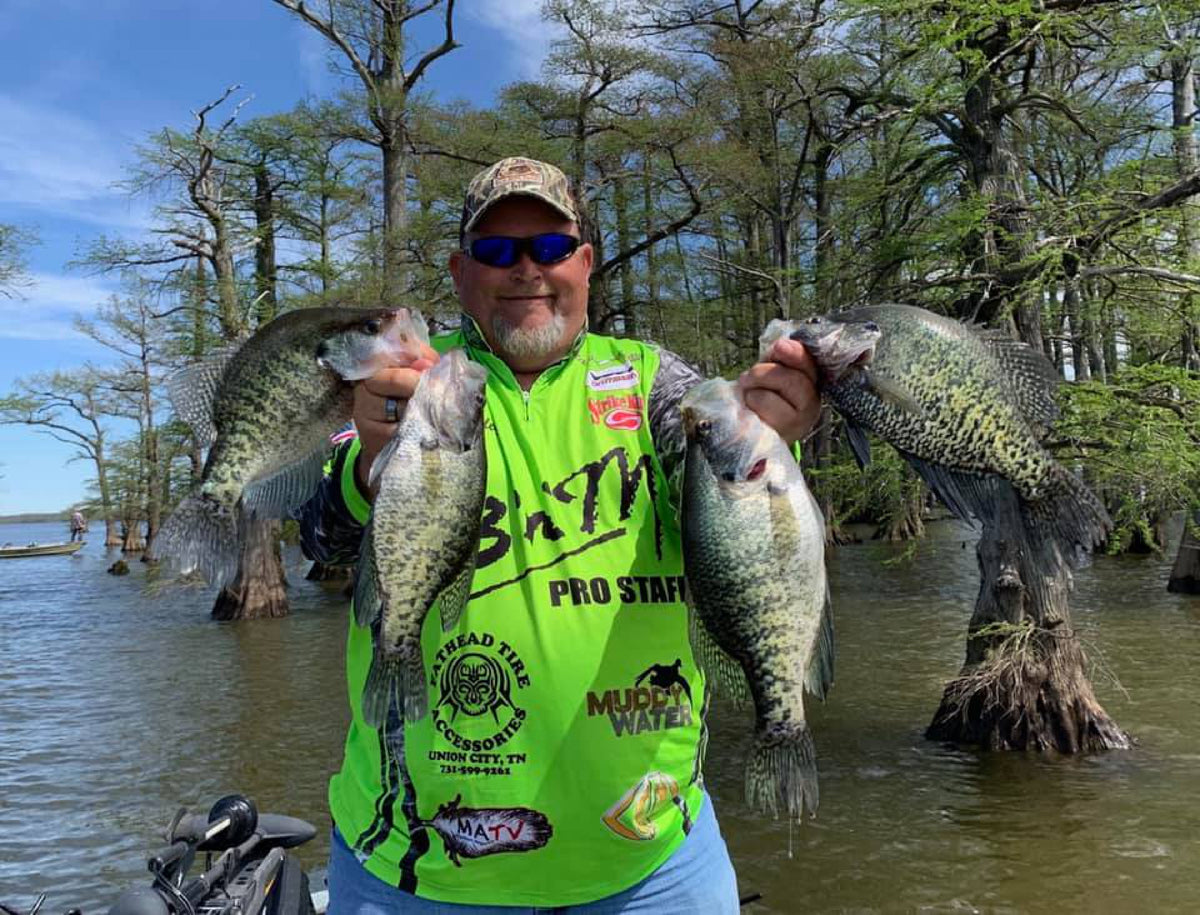Pre-Spawn Crappie Tips with Ronnie Capps
Pre-Spawn Crappie Tips with Ronnie Capps
By Phillip Gentry
If you spend any time around legendary outdoorsman Ronnie Capps, you learn two things pretty quick. First, he’s an avid duck hunter and duck guide and two, he’s an avid crappie fisherman and crappie fishing guide. That doesn’t give Capps much of a break between his two favorite pastimes.
“People say when the dogwoods are blooming is the time to get after the big crappie? Shoot, I’m telling you, as soon as duck season is over, I’m on the water the next day,” said Capps, “that’s when you’re gonna catch those big ones.”
Dealing with the weather is no small problem during the pre-spawn season when crappie began putting on extra weight in order to carry them through the spawn. Capps said whether he’s on his home lake on Reelfoot, Tennessee or practicing for an upcoming tournament on the American Crappie Trail, dealing with the weather is harder on the fisherman than the fish.

For Capps, the end of duck season means it’s time to hit the water and start crappie fishing.
Capps pointed out that one of the biggest mistakes that crappie anglers often make is trying to fish too fast. While he and partner Steve Coleman are fishing during a tournament, he resists the urge to run all over the lake.
“First you have to find the fish first and that means you need to find the structure,” he said. “Fish won’t leave water that has good cover and if there’s cover, there’s going to be food. You just have to give them time to make up their mind.”
Capps said it’s not unusual for he and Coleman to fish so slow during the pre-spawn season that it may take them 45 minutes to cover 100 yards of cover. The duo are world renown for their style of slow vertical trolling for crappie, often referred to as tight lining or pushing. The pair have won more tournaments and championships sitting side-by-side on the front of the boat intently watching 6 – 8 B’n’M poles, alert for even the slightest sign of a bite.
“Wind and boat wake are the toughest things on us,” Capps said. “It’s really hard to present the bait right when the boat is rocking back and forth.”
Over his years of tournament fishing, Capps said there were so many little things that he does that helps him catch fish, it would be hard to list them all. He said having the right fishing rods was near the top of the list. The pair use 16-foot Buck’s Graphite Jig Poles when tight lining. The poles allow them to fish well out in front of the boat to keep from spooking fish.

B’n’M poles provide the strength, the length, and the sensitivity to bring the big ones to the boat.
“Some days it’s tough to get bites and your struggling to get them. Those poles telegraph when a crappie is even looking at the bait. You develop an eye for a light bite, even when you’re working through heavy cover with double hook minnow rigs,” said Capps.
Speaking of rigs, Capps said a little tidbit that helps him when he has to tie on a new rig or check his knots after unhooking a big fish or getting loose from a snag is being able to feel his fingers in cold weather.
“We carry a little cooler full of warm tap water on the boat with us,” he said. “Just fill it up in the morning and before you have to tie a knot or do some work that requires good feel, just stick your hand in that warm water for a minute. It’ll heat your hand up like no heater can.”
Capps said another good tip is to recognize that even in flip flopping weather that is so common early in the year, anglers shouldn’t expect the fish to move all that far.
One of the keys to successful pre-spawn crappie fishing while spider rigging is to slow down and give the crappie time to find and decide to take your bait.
“I think they move more up and down than back and forth,” he said. “If you’ve found crappie and then a cold front comes in, they might sink down a little, but they’re not going to leave. That’s when you really have to slow down even more and just crawl through the area.”
Capps said you can expect the fish to do the opposite on a warming trend during February and March. He said if the water is 50 degrees and the air warms up to 70, look for crappie to move up several feet and maybe even hold just under the surface of the water if the wind is calm.
“The activity level of these fish increases with the weather, said Capps. “They’ll stay in the same area where they have food and cover but on a warm, calm dayyou might be watching the top of the rig sticking out of the water when you’re fishing for them.”
B’n’M not only provides you with the gear and tackle you need to make you a better angler, our seasoned pro staff team are always looking for better ways to catch fish using the most proven methods and gear on the market. Check out our website at bnmpoles.com
Also in Weekly Tips and Techniques

Winter Crappie Fishing Strategies with Lance Hughey
B’n’M pro-staffer Lance Hughey said it never gets too cold to catch crappie.

North Texas Fall Crappie Fishing with Brian Carter
Texas crappie pro-staffer Brian Carter loves to pitch jigs at standing timber during the fall of the year.

Summer Crappie Fishing with Billy Blakley
B’n’M pro-staffer Billy Blakley claims the copious amount of rainfall so far this year has created some great summer crappie fishing on Reelfoot Lake.

